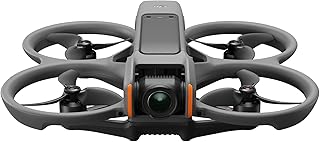DJI Drones for Filmmaking: Soaring New Heights in Your Next Movie
DJI drones have revolutionized filmmaking, offering filmmakers unprecedented aerial perspectives and creative possibilities. Whether you're shooting a dramatic landscape, a thrilling action sequence, or a heartwarming love story, a DJI drone can elevate your film to new heights. Here's a comprehensive guide to using DJI drones in your next movie:
1. Choosing the Right Drone:
* DJI Mavic 3: This flagship drone boasts a powerful Hasselblad camera with a 4/3 CMOS sensor, delivering stunning 5.1K video and 20MP stills. Its advanced features include a 46-minute flight time, obstacle avoidance, and a 15km transmission range.
* DJI Mini 3 Pro: Ideal for portability and ease of use, this compact drone offers 4K/60fps video, 12MP stills, and a 34-minute flight time. Its small size and lightweight design make it perfect for travel and tight spaces.
* DJI Air 2S: A balance between power and portability, this drone features a 1-inch CMOS sensor, 5.4K video, and 20MP stills. Its 31-minute flight time and advanced obstacle avoidance system make it a versatile option.
2. Essential Drone Accessories:
* ND Filters: Control the amount of light entering the lens, creating beautiful cinematic effects like shallow depth of field and soft focus.
* Gimbal Stabilizers: Enhance the drone's stability and image quality, especially in windy conditions.
* Landing Gear: Protect the drone's camera from damage during landings.
* Extra Batteries: Ensure you have enough power for your shoots, especially for longer filming sessions.
* SD Cards: Choose high-capacity, high-speed SD cards for storing your footage.
3. Filmmaking with DJI Drones:
* Planning Your Shots: Scout your location thoroughly and visualize the desired aerial shots. Consider wind conditions, obstacles, and flight regulations.
* Composition and Framing: Use the drone's camera to achieve unique perspectives, cinematic framing, and dynamic compositions.
* Camera Movement: Explore the drone's different movement options, including slow pans, smooth tilts, and dynamic orbits, to create engaging visuals.
* Lighting and Color: Leverage natural light and adjust the drone's settings to achieve desired lighting and color tones.
* Sound Design: Record audio separately or use drone-specific microphones for capturing the soundscape.
4. Legal Considerations:
* FAA Regulations: Familiarize yourself with the FAA's drone regulations, including registration, licensing, and flight restrictions.
* Permissions and Waivers: Obtain necessary permits and permissions from local authorities and property owners before flying.
* Privacy and Security: Respect people's privacy and avoid filming sensitive areas.
5. Post-Production:
* Stabilization and Editing: Use software like Adobe Premiere Pro or DaVinci Resolve to stabilize footage, color grade, and add effects.
* Creating Seamless Transitions: Blend drone footage with ground-level shots for a seamless cinematic flow.
Conclusion:
DJI drones offer filmmakers a world of possibilities for creating stunning visuals. By carefully planning your shots, understanding the technology, and adhering to regulations, you can leverage the power of drones to elevate your next film to new heights. Embrace the soaring perspectives, creative freedom, and dynamic visuals that DJI drones provide, and unlock the true potential of your storytelling.


